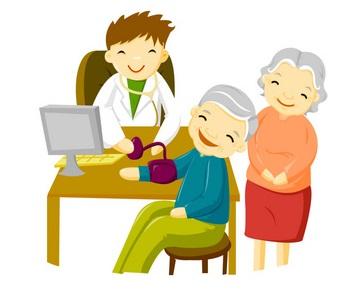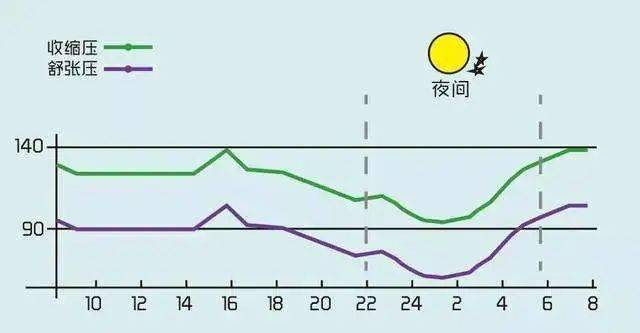Hypertension in the Elderly — — I Will Answer Your Confusion (2)
"Dr. Gao, my sphygmomanometer is inaccurate!" As soon as Lao Zhang entered the consulting room, he took out an electronic blood pressure monitor and put it on the table. Lao Zhang just came to the clinic last week, is a patient with hypertension, began to take medication after the suggestion to monitor blood pressure, today is to see again. I said, "Wait, what's going on?" It turned out that Lao Zhang went home after seeing a doctor last week, according to the doctor's advice to change his lifestyle and began to adhere to daily activities and adhere to medication. I also bought an electronic blood pressure monitor to measure blood pressure every day. But he found that the values measured by the sphygmomanometer often changed. Is the sphygmomanometer wrong? Lao Zhang kept muttering.

After listening to Lao Zhang's narration, I said, "OK, let's measure the blood pressure with the mercury sphygmomanometer first, and then measure the blood pressure with your electronic sphygmomanometer."; Results The error of the two measurement values is less than 5mmHg. He asked Lao Zhang, "When did you measure your blood pressure?" Lao Zhang: "You don't want me to be more active, every morning after getting up, I will go out for a walk for an hour or so, come back to measure the blood pressure is high, but the more the lower." That's right! I said to Lao Zhang: "The next time you measure blood pressure, go home after exercise and rest first, calm down and then measure blood pressure should be OK." Because blood pressure goes up right after exercise." Lao Zhang suddenly realized, "So it is!" The problem had been solved, and Lao Zhang took the blood pressure monitor and went home satisfied.
It turns out that people will have increased blood pressure and increased heart rate after exercise. Blood pressure is often higher when measured soon after activity, and it will slowly decrease after rest and calm down. In other words, a person's blood pressure is not fixed.
At different times in 24 hours a day, blood pressure is high and low, if the 24-hour blood pressure value is recorded as a continuous curve, there are peaks and troughs. Generally from 6 a.m. to 10 a.m., it is the peak of the day, and there is a small peak at 2 to 3 p.m., and the blood pressure is the lowest in the night sleep state. The whole curve is like a spoon, called the "ladle" blood pressure curve.
 A person's blood pressure repeats this cycle every day. However, some people, on the contrary, have high blood pressure at night, which is called "non-arytenoid" blood pressure curve. In addition, blood pressure fluctuations have a seasonal curve, that is, blood pressure often rises in autumn and winter, and blood pressure is low after summer.
A person's blood pressure repeats this cycle every day. However, some people, on the contrary, have high blood pressure at night, which is called "non-arytenoid" blood pressure curve. In addition, blood pressure fluctuations have a seasonal curve, that is, blood pressure often rises in autumn and winter, and blood pressure is low after summer.
Therefore, if you have high blood pressure, you should monitor your blood pressure regularly. Blood pressure fluctuations, the first should consider whether the condition has changed, rather than doubting whether the sphygmomanometer is broken.
According to the latest "China Elderly Hypertension Management Guidelines 2019" recommendation: home blood pressure measurement, it is recommended to use the upper arm automatic electronic sphygmomanometer certified by the international standard program, not recommended wrist sphygmomanometer and finger sphygmomanometer, nor recommended to use mercury column sphygmomanometer for home blood pressure monitoring.
Blood pressure measurement is the fundamental means and method to diagnose hypertension and observe the curative effect of hypertension, and it is very necessary in the process of hypertension diagnosis, treatment and follow-up. Therefore, it is particularly important to properly monitor blood pressure. Since the elderly have the characteristics of large blood pressure fluctuations, easy to combine night hypertension and morning hypertension, it is necessary to emphasize that elderly hypertension patients should self-measure their blood pressure at home, so as to more truly reflect the blood pressure status of individual living conditions, and exclude potential "office hypertension" or "white coat hypertension";. If necessary, the blood pressure of both upper limbs or extremities, as well as the lying, sitting, and standing positions, should be measured.
In the initial treatment stage of hypertension, people with unstable blood pressure or when adjusting the drug treatment plan, if conditions permit, blood pressure and pulse should be measured in the morning, noon, evening and before going to bed every day, and can be measured 2-3 times each time, take the average value, and find a doctor for follow-up evaluation after continuous measurement for 7 days, and adjust the treatment plan according to the situation.
For those with stable blood pressure control, blood pressure can be monitored 1 to 2 days per week. For patients on long-term drug therapy, it is recommended to monitor the blood pressure status before taking medication to evaluate the drug efficacy. It is best to record the date and time of each blood pressure measurement and all blood pressure readings in detail, rather than just recording the average, so that doctors can guide and evaluate the effectiveness of blood pressure monitoring and control.
For patients with mental anxiety and unstable blood pressure, especially the elderly, blood pressure fluctuates greatly throughout the day, and "non-aryten-type" hypertension is more common, it is recommended to monitor 24 hours ambulatory blood pressure meter. Ambulatory blood pressure monitor can continuously measure the blood pressure level and blood pressure fluctuation state of individuals in daily work and life, can comprehensively and accurately assess the blood pressure level and fluctuation state of individuals, facilitate the monitoring of blood pressure during sleep at night, and help to identify "white coat hypertension" and detect hidden hypertension and simple nocturnal hypertension.
Author:
Gao Wei
Member of Hypertension Branch of Chinese Geriatric Society
Deputy chief physician of geriatric cardiovascular disease, Second Medical Center, PLA General Hospital
Doctor of geriatric cardiology
(The opinions expressed are solely those of the author. Some pictures in this article are from the Internet, if there is infringement, please contact to delete)

